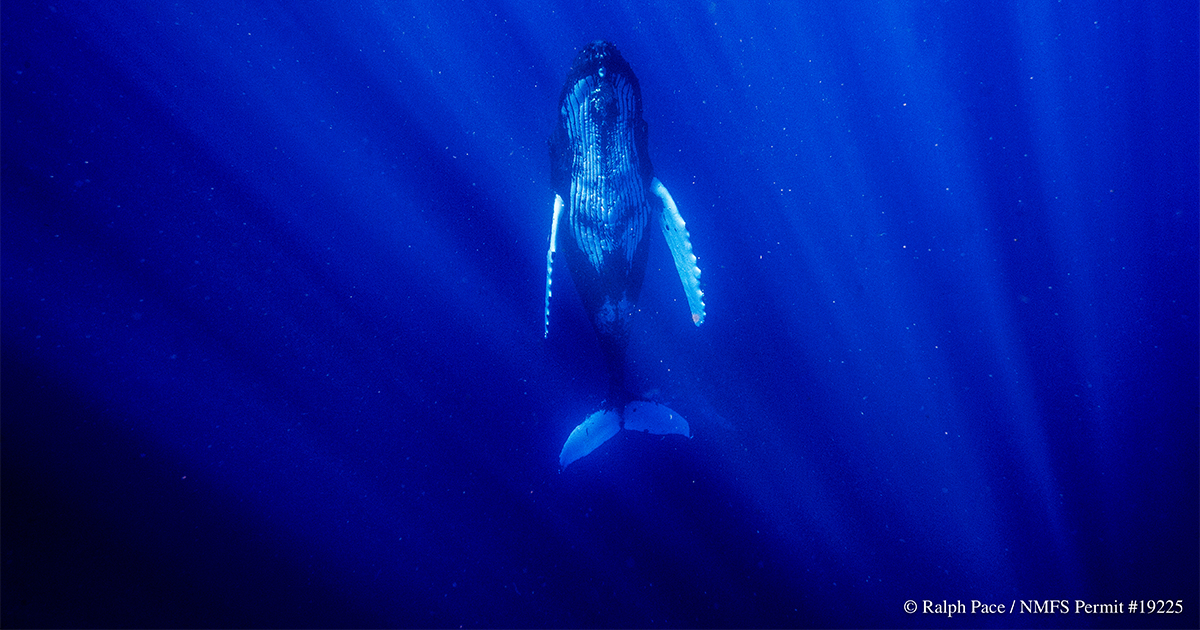Current NMFS humpback whale management policies assume four distinct populations in the North Pacific. Song studies suggest an alternate population model is warranted.
Whale Trust researchers and international colleagues are pleased to announce the publication of a multi-year study involving song comparison between four locations spanning the North Pacific in Scientific Reports. Shared song composition between humpback whales found in Philippines, Japan, Hawaii and Mexico in winter indicates ongoing mixing of ‘populations’ at some point during their annual cycles. Convergence of song over this three-year period recalls similar song transmission when humpback whales off east coast of Australia adopted a song from a western Australia population during a late 1990s’ study.
“Mixing may be the rule, not the exception and part of the biology of North Pacific humpback whales,” says project leader Dr. Jim Darling, who has spent his career studying humpback whale singers and their song.
Studies over at least 35 years (1977-2013) have shown humpback whales in these different winter assemblies have shared all, or portions of these ever-changing complex songs, as cited in a comparison included in this study. The common song across the North Pacific over the long-term indicates ocean-wide interaction and the composition’s fluid nature, annual variable mixing. While acoustic contact is necessary to song transmission, Darling cautions its mechanics, and the purpose of the song for the whales, are not fully understood.
For scientists, the song provides an acoustic identity, since each singer in a ‘population’ sings the same version of the ever-changing song. Singers, exclusively male, broadcast the song starting in fall, continuing through the winter migrations, and tapering off in spring before summer feeding. Recorded by hydrophone by teams of scientists across these four locations, the song’s composition was compared and analyzed by Darling.
“Song composition appears to reflect the recent interactions of populations of whales,” says Darling. Shared song suggests these populations may not be as independent of one another as outlined by management policies in effect. While Hawaiian humpbacks were delisted from endangered status in 2016, a reevaluation of their relationship with populations in Asia and Mexico may be warranted.
“Song should be considered when defining humpback whale populations across the North Pacific,” says Darling.
Currently, NOAA/NMFS (National Marine Fisheries Service) does not include song amongst the data determining populations.
“We may be making decisions around population management based on a model which doesn’t reflect humpback whale behavior in the North Pacific,” posits Darling.
The question must be posed, how can Mexico whales be ‘threatened’ and Asian whales “endangered” but Hawaii whales “warrant no protection” when it’s clear all three groups are integrated?
“We have been delighted to collaborate with Dr. Jo Marie Acebes in the Philippines, Manami Yamaguchi in Ogasawara, Japan, and Dr. Jorge Urbán and Oscar Frey in Baja and mainland Mexico,” says Whale Trust’s Executive Director, Dr. Meagan Jones. “This study would not have been possible without them. Thank you to all who supported this project and continue to support these independent studies across the Pacific.”
You can read the recent peer-reviewed publication in Scientific Reports.



